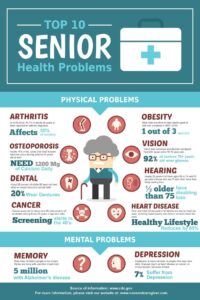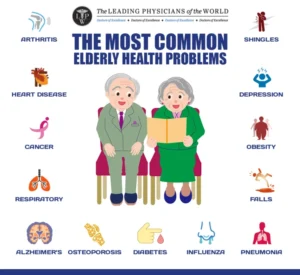



Having several health topics and one of those topics covers awareness on elder’s well being. Why some may even not realizing how significantly important this is to address in thinking should this even be addressed?
Obviously, YES is the answer to anyone in this world who thinks that question and here is the reason why. This was developed in 1963 for the purpose of professional development opportunities for community, hospital and residential services. Its focus is on those resources that are specifically concerned with older people’s mental health and wellbeing and those resources that are generally accessible on a statewide basis. The government even is involved that developed a program called a “Wellbeing in Later Life” with one major aspect on covering 1.)the understanding of anxiety and depression 2.) strategies to help manage core symptoms 3.)practical skills to practice each week to help recovery 4.) stories about how others have applied the skills to help them recover; which is one small area of what this covers with much more.
Regarding the global trend in particular on elders with health promoting their age it is predicted the amount of elders is considerably increasing from decades back.
With facts check this out:
The global population is ageing at a rapid rate. In 1950, just over five percent of the world’s population was 65 years or older. By 2006, that number had jumped to eight percent. By 2030, experts anticipate that older adults will comprise 13 percent of the total population—one in eight people will be 65 or older. While developing countries will experience the most rapid growth in ageing, with increases of up to 140 percent, developed countries will experience increases averaging 51 percent. (Women, who tend to outlive men, will comprise the bulk of the older adult population.) Simultaneously, overall population is declining in many countries due to low fertility rates, HIV/AIDS, and international migration. The United Nations estimates that the number of adults 60 years and older will outnumber children under the age of 15—an historical first—by 2045.
Not only is the world ageing, but it is also ageing differently. Life expectancy is increasing, with people 85 years and older—especially women—comprising the fa stest growing segment of the population in many countries. Notable exceptions include South Africa, where life expectancy dropped from 60 to 43 years in the last decade, primarily due to HIV/AIDS. Globally, more people are dying from non-communicable diseases and chronic, degenerative conditions than from infectious and parasitic diseases, a trend expected to grow in the next couple of decades. (Whether increased life expectancy will be associated with increases or decreases in disability status remains an open question.) At the same time, communicable diseases—especially HIV/AIDS—remain prevalent, particularly in low- and middle-income countries. In considering the benefits and consequences of population ageing, therefore, it is essential to consider not only longevity but also healthy life expectancy, or expected years of life free of illness, disease, and disability.
Looking at older adults (elders 65 and older)-Although older adults serve as essential resources to their communities, they face a great risk of marginalization. Older adults often experience both social de-evaluation and poverty upon leaving the labor market; financial market fluctuations contribute to income and social insecurity regardless of employment history, especially in countries with developing and transitioning economies. Groups particularly vulnerable to poverty and social devaluation in old age, due to cultural and institutional biases which affect people throughout the lifespan, include women, people with disabilities, people with a migration background, and people who do not belong to the majority racial or ethnic group of any given society. Moreover, older adults seeking support to maintain independence and quality of life frequently encounter either a lack of social services, especially in rural and remote areas, or services that are poor in quality or unresponsive to linguistic and cultural diversity.
Participation of older adults in societal development enhances the well-being both of older adults and of communities as a whole and depends on multiple factors.
Accordingly, the rising proportion of older people is placing upward concerns & pressure on overall health care spending in the developed world, although other factors such as income growth and advances in the technological capabilities of medicine generally play a much larger role.
Relatively little is known about aging and health care costs in the developing world. Many developing nations are just now establishing baseline estimates of the prevalence and incidence of various diseases and conditions. Initial findings from the WHO SAGE project, which provides data on blood pressure among women in six developing countries, show an upward trend by age in the percentage of women with moderate or severe hypertension, although the patterns and age-specific levels of hypertension vary among the countries. If rising hypertension rates in those populations are not adequately addressed, the resulting high rates of cerebrovascular (CVA-stroke) and cardiovascular disease are likely to require costly medical treatments that might have been avoided with antihypertensive therapies costing just a few cents per day per patient. Early detection and effective management of risk factors such as hypertension—and other important conditions such as diabetes, which can greatly complicate the treatment of cardiovascular disease—in developing countries can be inexpensive and effective ways of controlling future health care costs.
In high-income countries, heart disease, stroke, and cancer have long been the leading contributors to the overall disease burden. The burden from these and other chronic and non-communicable diseases is increasing in middle- and low-income countries as well.
To gauge the economic impact of shifting disease profiles in developing countries, the World Health Organization (WHO) estimated the loss of economic output associated with chronic disease in 23 low- and middle-income nations, which together account for about 80 percent of the total chronic disease mortality in the developing world.
Largely because of global aging, the incidence of cancer is expected to accelerate in coming decades. The annual number of new cancer cases is projected to rise to 17 million by 2020, and reach 27 million by 2030. A growing proportion of the global total will be found in the less developed world, and by 2020, almost half of the world’s new cases will occur in Asia.
So regarding anyone who may have questioned today or at another time why is elder health important I think after reading this you would see why. The more unhealthy an elder person is in large populations the higher the population of unhealthy elders will be in society besides putting the cost of health living in communities higher. So if people stay healthy from childhood to geriatric age the less health problems we will have. National elder well being is a prime concern to be addressed and dealt with just like neonate, pediatric and adult to mid adult. Every age in important and every age bracket has rights with vitally importance to address in there health!




